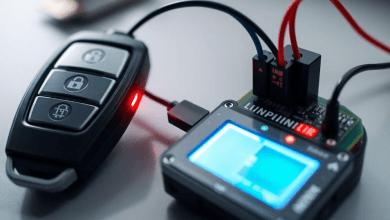
Smartphone cameras have advanced dramatically, yet great photos still depend on the person holding the device. Anyone can capture beautiful, story-filled images by learning a few simple techniques and practicing regularly. This guide focuses on easy, effective steps to help everyday users get more from their phones. You’ll learn how to compose better shots, handle light, and avoid common mistakes that blur or flatten your pictures. With attention to small details and a creative eye, you can turn casual moments into striking, share-worthy photos that look like they came from a professional camera.
How Can You Take Better Photos with Your Smartphone?
Start with a Clean Lens and Proper Camera Settings
A dirty lens can ruin an otherwise perfect shot. Before you start shooting, gently wipe your phone’s lens with a soft cloth to remove fingerprints and dust. Then, open your camera settings and enable gridlines to help frame your composition. Use HDR mode to balance bright and dark areas for more natural results. If your phone offers RAW or ProRAW, switch it on to preserve fine details for editing later. Adjust white balance and focus manually when needed. Simple preparation makes your images sharper, clearer, and more professional right from the start.
Master Composition—Rule of Thirds, Leading Lines, and Framing
Composition separates a quick snapshot from a captivating photograph. Enable your camera’s grid and position your subject along one of the intersecting lines—the rule of thirds helps create balance and visual interest. Use leading lines such as roads, fences, or shadows to guide the viewer’s eyes toward the subject. Look for natural frames like archways, windows, or tree branches to add depth. Leave some negative space to let your photo breathe. Practicing these principles ensures your images feel well-composed, engaging, and thoughtfully structured rather than cluttered or random.

Keep Your Shots Steady and Skip the Digital Zoom
Blurry photos often come from shaky hands or poor stabilization. Hold your phone firmly with both hands, tuck in your elbows, or lean against a wall for support. A mini tripod or grip helps even more, especially in low light. Avoid digital zoom, which simply enlarges pixels and reduces clarity. Instead, move closer to your subject or crop later while editing. If your phone includes an optical zoom or telephoto lens, use that instead. Keeping your shots steady and zooming smartly ensures your images remain sharp, crisp, and naturally detailed without losing quality.
Build Habits to Improve Your Photography Skills
Practice Daily and Try New Angles
Consistent practice is the fastest way to improve your photography. Set a goal to take a few photos every day, even if it’s just around your home or neighborhood. Try experimenting with different perspectives—kneel down, shoot from above, or tilt your phone slightly to create more dynamic angles. Challenge yourself to capture ordinary scenes in new ways. These experiments sharpen your creativity and help you understand light and shadow better. Over time, your instincts for composition and timing develop naturally, and you’ll start spotting photo opportunities wherever you go.
Learn from Others and Analyze Good Photos
Great photographers study other great photographers. Follow creators on social media or photo platforms and observe how they use color, composition, and light. Ask yourself what makes their photos stand out. Then, look through your own gallery and compare. Which photos feel strong? Which falls flat? Identify patterns—perhaps your best shots share similar lighting or angles. Revisit and re-create those techniques deliberately. Analyzing and learning this way sharpens your visual awareness. You’ll soon understand how small adjustments in framing or exposure can turn an average photo into something memorable.
Back Up and Share Your Work Smartly
Your photos tell your story, so don’t risk losing them. Set automatic backups to cloud services like Google Photos or Dropbox. This keeps your collection safe and organized. Sharing your work also helps you grow. Post selectively on social media or photography forums to gather feedback. Discuss what people like or notice in your shots—it builds confidence and insight. Consider creating themed albums or a personal portfolio to track your progress over time. Smart backup and sharing habits protect your memories while helping you refine your creative voice.
Conclusion
Smartphone photography thrives on observation, patience, and curiosity—not expensive gear. Clean your lens, master composition, keep your hands steady, and practice every day. Learn by studying others and reflecting on your own shots. Most importantly, enjoy the process and experiment freely. Each photo teaches you something new about light, timing, and perspective. With consistent effort, your phone becomes a powerful storytelling tool, capable of capturing moments that look polished and full of life. Each device has its own tools—so if you’ve ever wondered why does huawei not have google, it’s simply part of how its ecosystem works. What matters most is your eye for the moment, not the brand in your hand.




